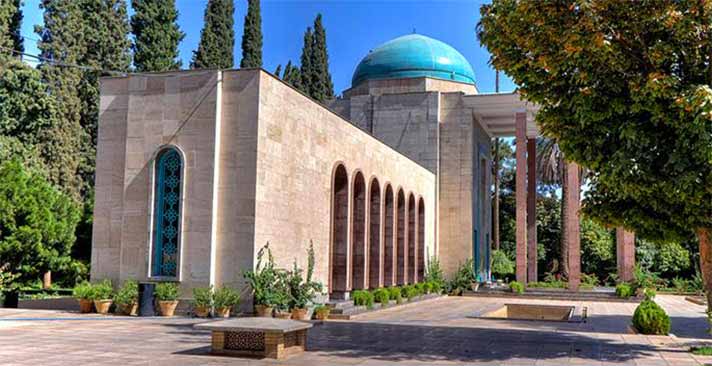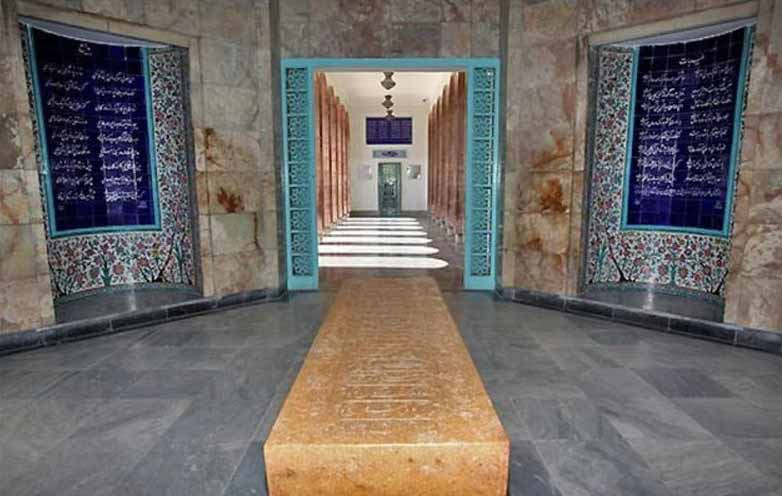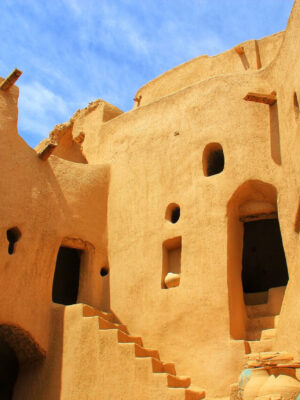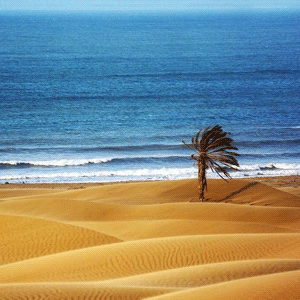Saadi, Master of Speech
Saadi is one of the greatest Persian poets whose fame is worldwide. Due to the proper and appropriate use of Persian words in his works, he is known as “The master of speech”. Saadi’s subtleties in using the Persian language are still unparalleled.

Saadi’s works are universal
Shiraz is Saadi’s hometown and he was born there in 1210. When he was young, he went to Al-Nizamiyya of Baghdad to study some lessons in literature and theology. Then, Saadi traveled to Syria and Mecca and came back to Shiraz. Saadi also traveled to some other countries such as India, Azerbaijan, Yemen, North Africa, etc. throughout his life.
Saadi’s Teachings
Saadi’s main concern is moral teachings which he has dealt with most in Bustan and Golestan. All his works prove that Saadi was beyond a poet or writer. He was sort of a sage who has analyzed every matter concerning ethics, mysticism, theology, politics, sociology and practical wisdom in a very professional manner.
One of the most outstanding personalities of Saadi was his courage to be outspoken in front of the rulers. He never stooped to flattery and inordinate praise rulers, whom he always advised regarding the instability of power.

Saadi’s mausoleum is a place for whoever respects humanity and morality
Sheikh Saadi was apparently a religious man with no prejudice. He had a broad outlook and a heart full of tenderness toward all mankind. As the humankind and freedom had the greatest possible significance for him, his most important wish was to see all nations living in harmony.
Great characteristics of Saadi and his works could influence widely on non-Persian poets and writers as well as Persians. The translation of Saadi’s works into several languages has provided an opportunity for the folks around the world to enjoy the sweetness of his words.
Bustan and Gulistan (Golestan)
After Saadi came back Shiraz, he began to write his two famous books, Bustan and Gulistan. These books which replete with the richness of thought, have a didactic and edifying tone. Both of them contain meaningful stories about moral issues. Saadi has studied the customs, habits, actions and temperaments of his contemporaries particularly during his travels. In fact, he has brought out all the experiences of his travels in the form of stories and the most enticing manner with the spice of humor and anecdote in these two books.
Bustan is in the form of poetry and Gulistan is a mixture of poetry and prose. Frequently reading these books will never get you bored and whenever you read, you learn a new point.

The Bustan of Saadi is a book to praise virtue and truth
Saadi’s critical attitude in Bustan is to praise truth, virtue, spirituality, good thoughts and good deeds in a different manner. Some critics say that this book is the Utopia of Saadi’s dreams where the man is shown as he should be. Actually, by telling the stories about praising virtues and criticizing vices, he guides the human to his Utopia and ideal world.
Gulistan is the most beautiful Persian prose and is basically distinctive even within the world literature. Throughout the book, Saadi expresses the deep moral meanings through simple sentences. In Gulistan, Saadi has masterfully depicted the flaws and graces of the human society, where he analyzes the contradictions, conflicts and viewpoints among the individuals and various social classes. In moral issues and social problems, Saadi has gone to details in such a way as if the reader faces an expert in science as well as a poet.
Ghazals of Saadi
Above all, Sheikh Saadi Shirazi is famous for his lyric poems that the Persians call “Ghazal”. In fact, the climax of Saadi’s artistic achievement is his ghazals. The purity and simplicity of the romantic sonnets of Saadi have made them extremely pleasant for the readers. There are few Iranians who don’t remember and whisper his lyric poems.
The sonnets of Saadi focus on love, a love for the whole of creation and its creator. The ghazals are full of mystery and enchantment. Saadi believes that ignorance is the most misleading thing that prevents man to understand true love and gain wisdom.
Tomb of Saadi
If you wish to visit the tomb of Saadi you should go to Shiraz. The Iranians know The tomb of Saadi as “Saadieh” which housed a khanqah before Saadi was buried here in 1292.
Saadieh was remodeled thrice. First, during the Ilkhanate period, in the 13th century, Shams al-Din Juvayni, the minister of the second Ilkhanate king, built a tomb for Saadi. Then, in the 17th century, Karim Khan Zand ordered to destroy the tomb and build a mausoleum for this great poet. Again, in the 1950s, Mohsen Foroughi, the great Persian architect, built the current structure by inspiring the Chehel Sotoun palace in Isfahan.

The tomb of Saadi is located in Shiraz
Architecture and decorations in the Tomb
The atmosphere of Saadieh is exceptionally peaceful and refreshing. As you enter the place, the beautiful tall trees and the turquoise doom of the mausoleum at the end of the garden catch your eyes. Whenever you go there, you will hear the pleasant Persian traditional music that prevents you from leaving the place.
Having approached the mausoleum, you see a structure with tall columns and an eye-catching turquoise doom. The space inside the mausoleum is highly spiritual where verses of Bustan and Gulistan and the lyric poems of Saadi on the blue walls around the tomb have made a spiritual atmosphere. The motifs of birds and pink flowers are a very small part of Iranian fine arts that you can see even in the Persian carpets. On the gravestone, you see a poem of Saadi in praise of Muhammad (the prophet).

Verses of Bustan and Gulistan and the lyric poems of Saadi on blue walls around the tomb
By the mausoleum, there is a book store and café where you can buy a book of Saadi. You can treat yourself to a cup of tea or coffee. While you are drinking, you can ask your tour guide to read the poems for you in Persian language to enjoy fully your time.
Saadi, Master of Speech
Saadi is one of the greatest Persian poets whose fame is worldwide. Due to the proper and appropriate use of Persian words in his works, he is known as “The master of speech”. Saadi’s subtleties in using the Persian language are still unparalleled.

Saadi’s works are universal
Shiraz is Saadi’s hometown and he was born there in 1210. When he was young, he went to Al-Nizamiyya of Baghdad to study some lessons in literature and theology. Then, Saadi traveled to Syria and Mecca and came back to Shiraz. Saadi also traveled to some other countries such as India, Azerbaijan, Yemen, North Africa, etc. throughout his life.
Saadi’s Teachings
Saadi’s main concern is moral teachings which he has dealt with most in Bustan and Golestan. All his works prove that Saadi was beyond a poet or writer. He was sort of a sage who has analyzed every matter concerning ethics, mysticism, theology, politics, sociology and practical wisdom in a very professional manner.
One of the most outstanding personalities of Saadi was his courage to be outspoken in front of the rulers. He never stooped to flattery and inordinate praise rulers, whom he always advised regarding the instability of power.

Saadi’s mausoleum is a place for whoever respects humanity and morality
Sheikh Saadi was apparently a religious man with no prejudice. He had a broad outlook and a heart full of tenderness toward all mankind. As the humankind and freedom had the greatest possible significance for him, his most important wish was to see all nations living in harmony.
Great characteristics of Saadi and his works could influence widely on non-Persian poets and writers as well as Persians. The translation of Saadi’s works into several languages has provided an opportunity for the folks around the world to enjoy the sweetness of his words.
Bustan and Gulistan (Golestan)
After Saadi came back Shiraz, he began to write his two famous books, Bustan and Gulistan. These books which replete with the richness of thought, have a didactic and edifying tone. Both of them contain meaningful stories about moral issues. Saadi has studied the customs, habits, actions and temperaments of his contemporaries particularly during his travels. In fact, he has brought out all the experiences of his travels in the form of stories and the most enticing manner with the spice of humor and anecdote in these two books.
Bustan is in the form of poetry and Gulistan is a mixture of poetry and prose. Frequently reading these books will never get you bored and whenever you read, you learn a new point.

The Bustan of Saadi is a book to praise virtue and truth
Saadi’s critical attitude in Bustan is to praise truth, virtue, spirituality, good thoughts and good deeds in a different manner. Some critics say that this book is the Utopia of Saadi’s dreams where the man is shown as he should be. Actually, by telling the stories about praising virtues and criticizing vices, he guides the human to his Utopia and ideal world.
Gulistan is the most beautiful Persian prose and is basically distinctive even within the world literature. Throughout the book, Saadi expresses the deep moral meanings through simple sentences. In Gulistan, Saadi has masterfully depicted the flaws and graces of the human society, where he analyzes the contradictions, conflicts and viewpoints among the individuals and various social classes. In moral issues and social problems, Saadi has gone to details in such a way as if the reader faces an expert in science as well as a poet.
Ghazals of Saadi
Above all, Sheikh Saadi Shirazi is famous for his lyric poems that the Persians call “Ghazal”. In fact, the climax of Saadi’s artistic achievement is his ghazals. The purity and simplicity of the romantic sonnets of Saadi have made them extremely pleasant for the readers. There are few Iranians who don’t remember and whisper his lyric poems.
The sonnets of Saadi focus on love, a love for the whole of creation and its creator. The ghazals are full of mystery and enchantment. Saadi believes that ignorance is the most misleading thing that prevents man to understand true love and gain wisdom.
Tomb of Saadi
If you wish to visit the tomb of Saadi you should go to Shiraz. The Iranians know The tomb of Saadi as “Saadieh” which housed a khanqah before Saadi was buried here in 1292.
Saadieh was remodeled thrice. First, during the Ilkhanate period, in the 13th century, Shams al-Din Juvayni, the minister of the second Ilkhanate king, built a tomb for Saadi. Then, in the 17th century, Karim Khan Zand ordered to destroy the tomb and build a mausoleum for this great poet. Again, in the 1950s, Mohsen Foroughi, the great Persian architect, built the current structure by inspiring the Chehel Sotoun palace in Isfahan.

The tomb of Saadi is located in Shiraz
Architecture and decorations in the Tomb
The atmosphere of Saadieh is exceptionally peaceful and refreshing. As you enter the place, the beautiful tall trees and the turquoise doom of the mausoleum at the end of the garden catch your eyes. Whenever you go there, you will hear the pleasant Persian traditional music that prevents you from leaving the place.
Having approached the mausoleum, you see a structure with tall columns and an eye-catching turquoise doom. The space inside the mausoleum is highly spiritual where verses of Bustan and Gulistan and the lyric poems of Saadi on the blue walls around the tomb have made a spiritual atmosphere. The motifs of birds and pink flowers are a very small part of Iranian fine arts that you can see even in the Persian carpets. On the gravestone, you see a poem of Saadi in praise of Muhammad (the prophet).

Verses of Bustan and Gulistan and the lyric poems of Saadi on blue walls around the tomb
By the mausoleum, there is a book store and café where you can buy a book of Saadi. You can treat yourself to a cup of tea or coffee. While you are drinking, you can ask your tour guide to read the poems for you in Persian language to enjoy fully your time.





















